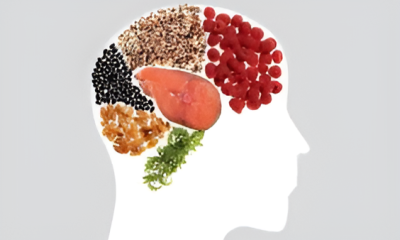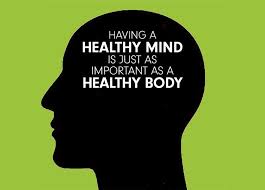Healthy food
Moringa Leaves: Top Health Benefits You Need to Know

Moringa leaf has earned the name of “miracle plant” around the world. These leaves are packed with nutrients and antioxidants leaf has been used by humanity for centuries in traditional medicine. Today, these leaves is commonly used as an improver of health. Let’s see why the plant is especially helpful for the body and brain.
What Is Moringa Leaf?
Moringa is a tree found mostly in the tropics and subtropics. The leaves are tiny, green, and nutrient-dense. It’s also commonly referred to as the “drumstick tree” or “horseradish tree.” Moringa leaves contain more vitamins and minerals than most vegetables.
Rich Source of Nutrients
Moringa leaf is rich in nutrients. It contains vitamins A, C, and E, the vitamins required for health. They guard your cells against damage. It contains calcium, potassium, and protein. These help in healthy bones, muscles, and nerves.
Daily use of moringa leaves can make up for nutrient deficiencies in your diet. This is especially handy where fresh vegetables are not readily available.
Powerful Antioxidants for Disease Prevention
One of the biggest benefits of moringa leaf is that it is packed with antioxidants. Antioxidants fight bad molecules known as free radicals in your body. Free radicals destroy cells, which cause aging and disease.
Moringa leaves consist of antioxidants like quercetin and chlorogenic acid. They are reducers of inflammation that lower your risk of chronic diseases. For example, they can help prevent heart disease and diabetes.
Increases Your Immune System
These leaves make your immune system healthy. They are rich in vitamin C, which supports your body’s immunity. Having a healthy immune system will ensure your body resists infections with ease. Moringa daily intake of leaves can reduce the frequency of diseases.
It’s especially beneficial during flu and cold season or stress season.
Maintains Healthy Digestion
These leaves also improve digestion. These leaves contain fiber, ensuring that food can be passed through your intestines. Fiber prevents constipation and frequent bowel movements.
Moringa also contains anti-inflammatory properties that soothe your stomach. If you experience any form of digestive complications, this leaf can help relieve pain.
Regulates Blood Sugar Levels
Moringa leaf has the ability to lower blood sugar levels. This is beneficial for diabetics or those at risk. Studies shows that this leaf stabilizes blood sugar surges after eating.
Levelling out blood sugar levels maintains your energy levels steady and prevents diabetes complications. Including moringa leaf in your meals may keep blood sugar levels healthy.
Supports Heart Health
Your heart also gains from this leaf. It has the ability to reduce blood cholesterol levels and inflammation of blood vessels. High blood cholesterol raises the risk of heart disease, so moringa keeps it under control.
Moringa’s antioxidants shield your heart by avoiding damage to your arteries. Regular consumption of this leaf helps maintain healthy blood circulation and heart functions.
Encourages Healthy Skin and Hair
Moringa leaves feed your skin and hair. These leaves have vitamins A and E, which keep your skin smooth and youthful. They also smoothen wrinkles and protect from sunburn.
Moringa oil, taken from its seeds, also conditions the hair. It strengthen roots of hair and avoid dandruff. The use of moringa products can give you healthy skin and healthy hair.
How to Use Moringa Leaf in Your Diet
Moringa leaf is easy to add to foods. You can make use of fresh leaves, dehydrated powder, or capsules. Fresh leaves have a mild taste and can be added to salads or soup. Moringa powder can be used for smoothies, tea, or mixing with food.
Start with small amounts to avoid any stomach upset. Gradually increase as the body adjusts. Always buy moringa from trusted sources for best quality.
Are There Any Side Effects?
Moringa leaf is usually safe for most people when consumed in modest amounts. Very high doses, on the other hand, may lead to upset stomachs. Pregnant women should get the approval of their doctor before they use it.
Like any supplement, it’s best to consult a medical practitioner before habitual use.
These leaves are rich in numerous health benefits, ranging from immunity building to maintaining your heart healthy. These leaves are a rich natural food that can improve your overall wellness. Adding these leaves to your everyday diet is simple and will improve your wellbeing.
Utilize these leaves today and experience its natural benefits. Your body and mind will thank you!
Healthy food
Kids’ Healthy Eating: Simple Habits That Build Strong Bodies

Healthy eating is important for children. It helps them become strong and full of energy every day. Well-fed kids perform better in school and play more vigorously with friends. Healthy eating is not about giving up favorite foods—it’s about making healthy choices. This article offers easy tips children can follow to eat well and feel great.
1. Eat a Colorful Plate
Kids should consume plenty of fruits and vegetables in numerous colors. Each color has a different array of vitamins that feed the body and mind. Red, orange, and green foods make kids healthy and strong. If kids look at a colored plate, then eating food is fun and exciting.
2. Don’t Skip Breakfast
Breakfast is the breakfast meal. It supplies energy for the day. Breakfast skippers tend to be tired and have difficulty concentrating. Healthy foods for breakfast are oats, fruit, and eggs. Children must have Breakfast each day before school.
3. Drink Water Instead of Sugary Beverages
Kids usually request juice or soda, but they both contain a lot of sugar. Too much sugar exhausts children and destroys their teeth. The best drink for kids is water. Water hydrates kids and helps the brain function more efficiently. Kids can put pieces of fruit into the water for added flavor.
4. Make Snacks Count
Children need snacks that are rich in energy and fundamental nutrients. Fruits, yoghurt, nuts, and whole-grain crackers are healthy snacks. Children should never consume candy and chips daily. Healthy snacks fill children up between meals and become strong and healthy.
5. Listen to Your Tummy
Children need to learn their fullness and hunger signals. Eating until satisfied and not until stuffed keeps children from overeating. It creates a healthy food relationship. It is okay if children have leftovers to take to the next meal.
6. Help with Grocery Shopping and Cooking
Kids who help with cooking and shopping for groceries feel enthusiastic about eating healthy food. By letting children pick fruits and vegetables or help prepare meals, they can learn healthy eating. In this way, kids are likely to eat healthy food.
7. Limit Treats, Don’t Ban Them
Treats like sweets and fast foods are okay now and then. Children can have treats only sometimes. Children must have healthy food most of the time to make their bodies strong and happy. This balance makes children feel happy and stop them from craving.
Healthy food helps children grow up healthy, be active, and maintain a healthy mind. Through these simple habits, children can have fun eating and take care of themselves every day. Encourage children to eat a variety of differently coloured foods, drink plenty of water, and listen to their bodies. Small steps can make a big difference in the lives of children today and tomorrow.
Healthy food
Green Veggies for Kids: Smart Ways to Make Them Eat

Green leafy vegetables are nutritional superstars, packed with vitamins, fiber, and minerals. To many children, however, they’re nothing more than “green stuff” to avoid. Getting children to enjoy green vegetables is a simple test most parents are familiar with. But with some creativity, patience, and fun, kids can learn to love these superfoods. In this blog, you’ll learn simple, tried-tested ways to get your child to eat—and even enjoy—green vegetables without turning dinnertime into a battle.
Start Early and Persist
The earlier you introduce leafy greens to your child, the better. Serve little portions at meal times on a consistent basis. Even if initially your child isn’t having them, never give up. Repeated exposure will cause children to become more comfortable with new foods. It can take 10 or more times before a child will try a new vegetable. Be patient and persist.
Make Greens Fun and Colorful
Presentation matters a great deal to children. Use bright plates, fun shapes, and bright combinations to make green vegetables appealing. Prepare spinach or lettuce in star or heart shapes. Mix green veggies with red peppers or corn to add color to the plate. If food is interesting to view, children are more likely to eat.
Involve Children in the Cooking Process
Engage children in cooking. They may wash lettuce, tear leaves of spinach, or blend sauces. When children help prepare meals, they are proud and engaged with what they are creating. This instills a positive connection to vegetables. Give them easy tasks and let them “own” some aspect of cooking—it will be a game-changer.
Mix Greens into Smoothies
If your child won’t even touch leafy greens on a plate, try slipping them into smoothies. Blend spinach or kale with banana, apple, or berries—the sweetness of the fruits hides the flavor of the greens. Kids get the benefits without the fight. You can even call it a “super smoothie” or “Hulk drink” to make it funnier.
Add Greens to Their Favorite Dishes
Mix leafy greens into dishes your child already likes. Sprinkle chopped spinach onto pasta sauce, rice, noodles, or omelets as a nutritious topping. Mix shredded lettuce into tacos or burgers. This keeps the flavor they’re accustomed to and adds nutrition. Gradually increase servings as they get used to it.
Use Cheese, Butter, or Light Seasoning
Leafy greens by themselves may be bitter in taste to kids. Sauté greens with butter and garlic or top with melted cheese. A little seasoning can go a long way in their taste. Just be careful not to put too much salt or fat, but don’t shy away from adding a pinch of flavor to get kids to eat them.
Be a Role Model at the Table
Kids mimic what they see. If they see you eating leafy greens and enjoying them, they will likely do the same. Discuss during eating about how it tastes or what it does for your well-being. Avoid saying something like “you have to eat this” or “it is healthy.” Just eat and be an example.
Make Leafy Greens a Habitful Snack
Greens don’t have to wait for dinner time. Offer kale chips, spinach rolls, or lettuce wraps as an after-school snack. Snacks must be diminutive and fun. If you establish a habit of healthy snacking, kids will get accustomed to the taste and texture of leafy greens but not out of obligation.
Turn It into a Game or Story
Turn greens into play or a challenge. Say to your child, “Can you gobble up the spinach before the broccoli gets jealous?” or “Let’s turn into superheroes with these greens!” You can also create stories of unique plants that give power or super strength. This engages healthy eating as part of play.
Do Not Pressure and Praise Small Steps
Forcing kids to eat greens is usually counterproductive. Rather, compliment them for even trying—just a taste. Praise with words like, “Good job trying the spinach!” or “Great that you took a bite.” Positive reinforcement works better than coercion. It makes kids feel good about trying a second time.
Keep Trying Different Greens and Ways of Cooking
All greens are not created equal. If your child won’t eat spinach, substitute with kale, arugula, or romaine. Cook them in different ways—steamed, sautéed, or baked. Some kids will only eat crunchy kale chips, not soft spinach. Just continue to try new combinations until you have a few that they will eat.
Build Healthy Habits Slowly
Taking the little ones to consume leafy greens is not a matter of overnight. But small moves can become wonderful habits. Add vegetables to the routine diet. Remain calm, have fun, and persist in trying many tricks. With time, your baby’s taste buds will evolve—and their health will too.
Healthy food
Malnutrition: How to Fight It with Food and Care

Malnutrition is more common than you can think. It happens when a person is not able to get enough nutrients from food. It leads to weakness, retardation in growth, weak immunity, and unhealthy state of body. Malnutrition targets children, teenagers, and even adults—mostly from poor backgrounds. But the good news is that malnutrition can be turned around and prevented. Today in this blog post, we will see how to fight against malnutrition with smart eating, better habits, and less care at home.
1. Familiarize yourself with the Types of Malnutrition
There are two basic categories: undernutrition and overnutrition. Undernutrition occurs when a person is not getting sufficient energy, protein, or vitamins. It leads to weight loss, weakness, and stunted growth. Overnutrition is having excessive calorie intake but still lacking important nutrients. It normally leads to obesity along with hidden vitamin or mineral deficiencies. Understanding what kind it is helps create the right food and health plan. You must heal the root cause, not symptoms.
2. Catch the Common Signs Early
Early malnutrition detection is the start of its resolution. Pay attention to these signs: excessive fatigue or lacking energy, unexpected weight loss or very thin, difficulty concentrating or learning slowly, dry skin or hair loss, weakened muscles or puffy legs, and frequent feeling cold. If these symptoms occur, act quickly. Malnutrition is more difficult to treat if it continues too long. Early intervention results in better recovery.
3. Consume More Nutrient-Dense Foods Each Day
The simplest way to battle malnutrition is by good food. Prioritize foods high in vitamins, minerals, protein, and energy. Add eggs, meat, fish, beans as protein sources, whole grains such as rice, oats, and brown bread, fruits and vegetables in numerous colors, healthy fats such as nuts, seeds, and oils, and dairy or enriched milk for calcium and vitamin D. Everything in moderation. Every meal should have a mix of carbs, protein, and fat. These are what make the body stronger and recover faster.
4. Add More Meals and Snacks
When someone is malnourished, their body needs more food—but they may eat less due to poor appetite. Try to offer more meals in smaller amounts. Include between-meal snacks that are high in caloric content and protein. Examples include boiled eggs, peanut butter sandwiches, bananas with yogurt, or milkshakes and fruit smoothies. The objective is to slowly accumulate total food intake in a gentle way.
5. Use Fortified Foods and Supplements if Needed
There are times when food is inadequate. That is where fortified foods or doctor-prescribed supplements are used. They have added vitamins or minerals like iron, zinc, or vitamin A. Examples: fortified cereals, iron-supplemented biscuits, vitamin D milk, oral nutrition shakes. Always seek the advice of a health expert before supplementing, especially in children and the elderly.
6. Stay Hydrated with Healthy Drinks
Malnourished bodies need good fluids to work well. Avoid sweet beverages such as sodas and calorie-free drinks. Instead, drink clean water, milk, or clean fruit juices. Soups, broths, and coconut water also help with extra nutrients and energy. Do not go without drinking, especially during hot weather or when ill.
7. Exercise Safe Eating Hygiene
Infection and malnutrition are connected. Dirty food or water causes illnesses like diarrhea, which increases the nutrient loss. Wash with soap before eating. Clean fruits and vegetables properly. Boil or drink filtered water. Store cooked food in a way to avoid germs. Hygiene is a simple but useful measure to stop the malnutrition cycle.
8. Take Care of Mental and Emotional Well-being
Malnutrition affects the mind, too. Depression, anxiety, or concentration problems can result from it. Also, people who are stressed or depressed may not feed themselves well. Talk to a family member, teacher, or counselor. Create a good, cozy eating atmosphere. Give positive reinforcement instead of pressure while eating. Kindness and support enable the body to recover faster.
9. Encourage Activity and Rest
Light exercise promotes appetite and muscle buildup. It also eases digestion and mood. Bare-bones walks, stretching, or playing outside can be helpful. But rest also is as crucial. The body recovers while sleeping. Sleep a minimum of 8 hours each night. Balance between work and rest keeps the body and mind in top condition.
10. Consult a Doctor or Nutritionist
If treatment at home does not help, then it is time to visit a professional. A physician or nutritionist can assess for vitamin levels and weight issues. They can give a meal plan, supplements, or treatment as required. They also screen for any medical conditions underlying the malnutrition. Proper help sought at the right time can save lives and lead to complete recovery.
Malnutrition is not invincible, although it can be bad. With good food, good habits, and good care, you can beat it without medication. Good things begin with small things every day—better meals, clean water, kind care, and regular check-ups. You don’t need to eat fancy foods or expensive diets. You need consistent acts and a determination to become stronger. Healthy beginnings start with food, lifestyle, and kindness. Start today—because every bite matters.
-

 Healthy food4 weeks ago
Healthy food4 weeks agoHealthy Vegan: Fact vs. Fiction
-

 Healthy food3 weeks ago
Healthy food3 weeks agoChia Seeds: Tiny Grains With Giant Power
-

 Mind & Soul3 weeks ago
Mind & Soul3 weeks agoThe One-Minute Calm: How Breathing Can Change Everything!
-

 Healthy food2 weeks ago
Healthy food2 weeks agoFood to Fight Depression and Anxiety: What to Eat to Feel Better
-

 Mind & Soul3 weeks ago
Mind & Soul3 weeks agoUnderstanding Anxiety: A Guide to the Different Types
-

 Personal Development2 weeks ago
Personal Development2 weeks agoSchedule Overload: How to Handle a Busy Life Like a Pro
-

 Mind & Soul3 weeks ago
Mind & Soul3 weeks agoDistance Isn’t the End: 10 Ways to Keep Your Love Alive
-

 Personal Development3 weeks ago
Personal Development3 weeks agoA Practical Guide to Parenting a Child with ADHD





























